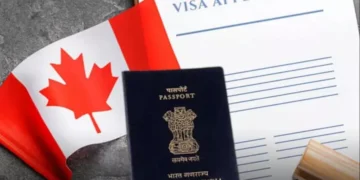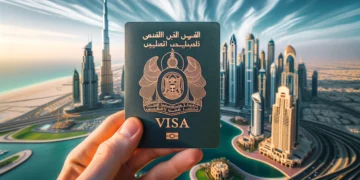Introduction
In an increasingly interconnected world, the United States remains a top destination for individuals seeking new opportunities, education, work, and adventure. The US visa application process is the gateway to realizing these dreams, but it can be complex and overwhelming. This comprehensive guide aims to demystify the process and address frequently asked questions, ensuring a smoother journey towards obtaining your US visa.
1. Understanding the US Visa: A Brief Overview
Before delving into the intricacies of the application process, it’s crucial to understand what a US visa is. A US visa is an endorsement on a passport that allows foreign individuals to enter the country for a specific purpose and duration. There are various types of US visas, ranging from tourist visas to student visas, each tailored to different purposes of travel.
2. Types of US Visas: Finding the Right Fit
The US offers a diverse range of visas, each catering to specific needs and intentions. Some common visa categories include:
a. Tourist Visa (B-2): If you plan to visit the US for leisure, tourism, or to visit family and friends, the B-2 visa is suitable. It’s essential to demonstrate your intent to return to your home country after your visit.
b. Student Visa (F-1): For those seeking to pursue academic programs in the US, the F-1 visa is applicable. This category requires proof of acceptance from a US institution and sufficient financial resources.
c. Work Visa (H-1B): Professionals with specialized skills may apply for the H-1B visa, which allows them to work for a US employer in a specific occupation.
3. US Visa Application Process: Step by Step
a. Research Your Visa Type: Before applying, determine the most suitable visa category for your purpose of travel. Visit the official U.S. Department of State website to explore visa options and their requirements.
b. Complete Form DS-160: Form DS-160, the Online Nonimmigrant Visa Application, is a vital part of the application process. Provide accurate and truthful information about your identity, purpose of travel, and background.
c. Pay the Visa Fee: Pay the appropriate visa application fee, which varies depending on the visa type. Keep the receipt as proof of payment.
d. Schedule a Visa Appointment: Create a profile on the US Visa Information and Appointment Services website. After filling out the DS-160 form, you can schedule your visa appointment at a US consulate or embassy.
e. Attend the Visa Interview: The visa interview is a critical step. Arrive at the consulate or embassy on time, dressed professionally, and carry all necessary documents, including your passport, DS-160 confirmation page, visa appointment confirmation, photograph, and supporting documents.
f. Attend Biometric Appointment: In some cases, you might need to attend a biometric appointment, where your fingerprints and photograph will be taken. This information helps the US government verify your identity.
g. Wait for Visa Processing: After the interview and biometric appointment, the consular officer will decide whether to approve your visa. Processing times vary, so check the estimated wait time for your specific location.
h. Visa Approval or Denial: If approved, your passport will be returned with the visa stamped in it. If denied, the consular officer will provide a reason for the denial.
4. Frequently Asked Questions
Look some US VISA FAQ for application process
Q1: Can I apply for a US visa without a specific travel date? Absolutely. While it’s beneficial to have a tentative travel date, you can apply for a visa without it. However, ensure your intention to travel remains consistent throughout the process.
Q2: How far in advance should I apply for a US visa? It’s advisable to apply at least 3-4 months before your intended travel date. This allows ample time for processing, interview scheduling, and any potential delays.
Q3: What documents should I carry for the visa interview? Essential documents include your valid passport, DS-160 confirmation page, visa appointment confirmation, photograph, financial documents, and any specific documents related to your visa category (such as acceptance letters for student visas or employment contracts for work visas).
Q4: How can I increase my chances of visa approval? Demonstrate strong ties to your home country, a clear purpose of travel, and sufficient funds to cover your expenses in the US. Providing genuine and accurate information throughout the process is crucial.
Q5: Can I reapply if my visa application is denied? Yes, you can reapply, but it’s essential to address the issues that led to the denial. Ensure you have additional supporting documents and a stronger case to present.
Conclusion
The US visa application process may seem intricate, but with proper guidance and preparation, it’s a manageable journey. By understanding the visa types, meticulously following each step of the application process, and addressing common concerns, you’ll be better equipped to navigate the path towards your US visa. Remember, each application is unique, and an optimistic outlook coupled with accurate information can significantly enhance your chances of a successful outcome
===================================================
















